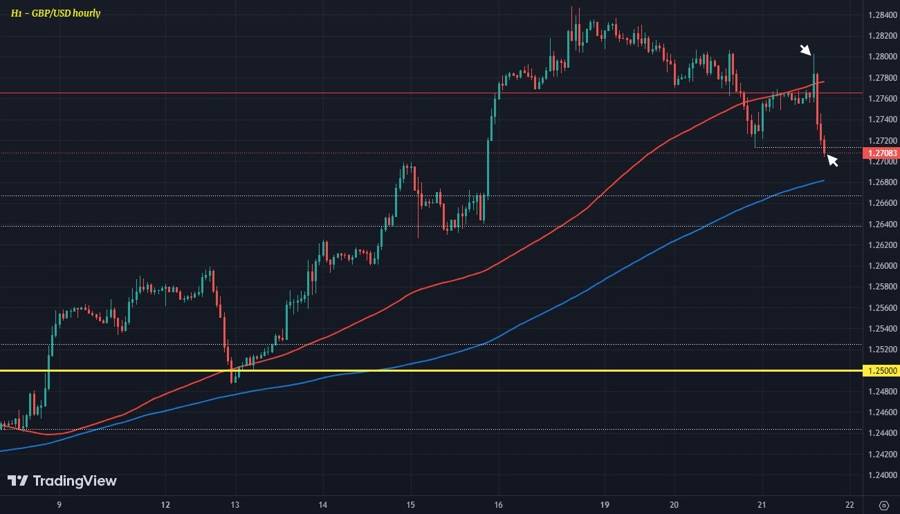[s2If !current_user_can(access_s2member_level4)]Please register to read full post. [lwa][/s2If] [s2If current_user_can(access_s2member_level1)] 
When the inflation data was first released, there was a temporary increase in the value of the pound against the US dollar, with the GBP/USD reaching a peak of 1.2802. However, as previously mentioned, this was a fleeting occurrence. It was also noted earlier that the data would not significantly impact the pound or the UK’s interest rate forecast in the near future.
Before the anticipated rate hike tomorrow, traders have factored in an almost 6% terminal rate, while the current bank rate is at 4.50%. This suggests that there is still a significant gap to be overcome, and it is uncertain how inflation will develop in the next few months.
We have witnessed how rapidly market opinions on central banks can change, as demonstrated by the Fed. Only slightly more than five weeks ago, conversations revolved around three interest rate cuts, but now we are discussing none until the end of the year.
It seems that there isn’t a lot of confidence among traders when it comes to using today’s UK inflation data to make preemptive moves, and we can see that uncertainty reflected in the current market activity.
The UK economy is facing additional challenges due to ongoing pressure on prices which increases the risk of stagflation. This is not currently seen in the US or Eurozone, and as a result, the circumstances make the pound less appealing to investors.
The GBP/USD exchange rate has dropped to 1.2705 after failing to maintain its upward momentum above the 100-hour moving average (represented by the red line) during the earlier trading session. The sellers have regained some short-term power, but the outlook is now less certain, with the price range caught between the upper level and the 200-hour moving average (represented by the blue line) at 1.2435.
If the latter is breached, it will be a significant setback for those who were expecting to continue the recent positive trend towards the 1.3000 mark. The pound is also being affected by a generally negative risk sentiment in the wider market, which is not helping its case. As we approach the end of the month and quarter, there is a potential for further risk rotation, which could make things more challenging for the pound in the coming days.
[/s2If]
Telegram Group
